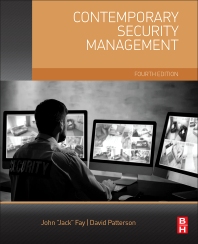How to navigate CISOs newest job requirements

Image via Unsplash
In recent years, organizations have seen chief information security officers (CISOs) take on an important role within the C-Suite. Government regulations and advisories such as the SEC's expanded cybersecurity rules and the FTC's amended Safeguards Rule make cybersecurity expertise in the boardroom not a want but a need for a business to function properly. However, despite CISOs being folded into these high-level conversations, some can have difficulties communicating their priorities, new initiatives and the latest threats to their peers outside of security.
As CISOs, it is part of the job to know the ins and outs of the cybersecurity industry and how it could impact our organizations' day-to-day operations. While this is one of the key responsibilities of the role, being able to communicate these emerging threats and new needs to a wider audience is equally important. When CISOs are able to effectively communicate with the rest of the C-Suite and governing bodies such as the Board of Directors or Audit Committee, they are able to ensure that the decisions being made propel the organization forward without compromising its security posture. It can be easy to get into the weeds during these conversations and confuse board members with technical terms and issues that seemingly don't impact the business. To help avoid these issues, here are three ways to effectively communicate cyber threats and priorities to the C-Suite.
Tie cyber threats back to the bottom line
While board members will all have various priorities regarding the organization, one thing security leaders can all agree on is the importance of the business's bottom line. Using the business's bottom line as the driving force in the discussion creates a universal language that board members can understand. So, if a new cyber threat could potentially impact sales or the latest security solution could greatly benefit customers, make sure board members can clearly visualize this impact.
Once executives have a better understanding of the potential losses and gains, then security leaders can dive into next steps like what it takes to mitigate the risks and how to safely implement new technologies. For example, this past year security leaders saw generative AI (GenAI) take the industry by storm. As organizations look to the future, it is CISOs’ job to communicate the value it can offer our companies. When non-technical business leaders (boards, governance committees, etc.) are able to grasp the potential benefits of this kind of technology rather than only its risks, companies are able to stay both competitive and secure.
Anticipate questions before they're asked
Cybersecurity will be a priority in 2024, and that hasn't always been the case. Those outside of the industry may have only recently become familiar with cybersecurity protocols and best practices, meaning their knowledge may not be as vast. Therefore, security leaders need to anticipate the questions they may have to stay ahead of the curve when presenting to them. Board members are likely to ask questions such as:
- What makes this threat different from the others?
- What benefits does this new solution offer that we don't already have?
- What are the ramifications if we don’t do this?
- Is this issue something we'll have to raise to our customers?
Preparing a presentation with these in mind allows security leaders to take a lot of the guesswork out Board members decision-making. Taking these moments lets Board members and peers of the C-Suite know security leaders are also thinking about the business as whole rather than just thinking about the cybersecurity impacts.
Make soft skills part of the job description
As CISOs are increasingly included into major business conversations, soft skills are becoming a key part of the job requirements. If security leaders get too technical or make cybersecurity unapproachable, they can easily lose the support of board members and inhibit cybersecurity initiatives. Hearing feedback from board members and other stakeholders is inevitable, so being able to receive it well and stay nimble is key.
Soft skills such as good teamwork, effective communication and adaptability will help foster a better connection between security leaders and board members; ensuring that their cybersecurity program matches the demands of not only the current threat landscape but any new regulations or standards. The most successful programs are ones that have the full support of the organization, and the right soft skills will help put security leaders on the right path. Too often, employees at any level consider cybersecurity to be an afterthought, and that is often due to the blame culture, overly technical training and the idea that "it couldn't happen to me." So, as the face of the company's security posture, it is CISO’s job to make best practices approachable so that the importance of these measures is felt from the top down.
CISOs as security evangelists
CISOs should be the evangelist for their organization’s cybersecurity programs. If they can't effectively communicate to key stakeholders, then they won't be able to push initiatives forward. By understanding the new requirements of the role, security leaders can ensure that they are staying secure and mitigating the impacts of the new cyber threats, incorporating the latest technologies that will help keep an organization competitive, and keeping cybersecurity top of mind in major business conversations.
The expected uptick in government guidance, the ever-evolving threat landscape and rapid development of new technologies could prove to be daunting for many organizations, however, with the right mindset, CISOs will be able to maintain a smooth transition and keep the business on the right track for a strong cybersecurity posture and continued business growth.
Looking for a reprint of this article?
From high-res PDFs to custom plaques, order your copy today!








